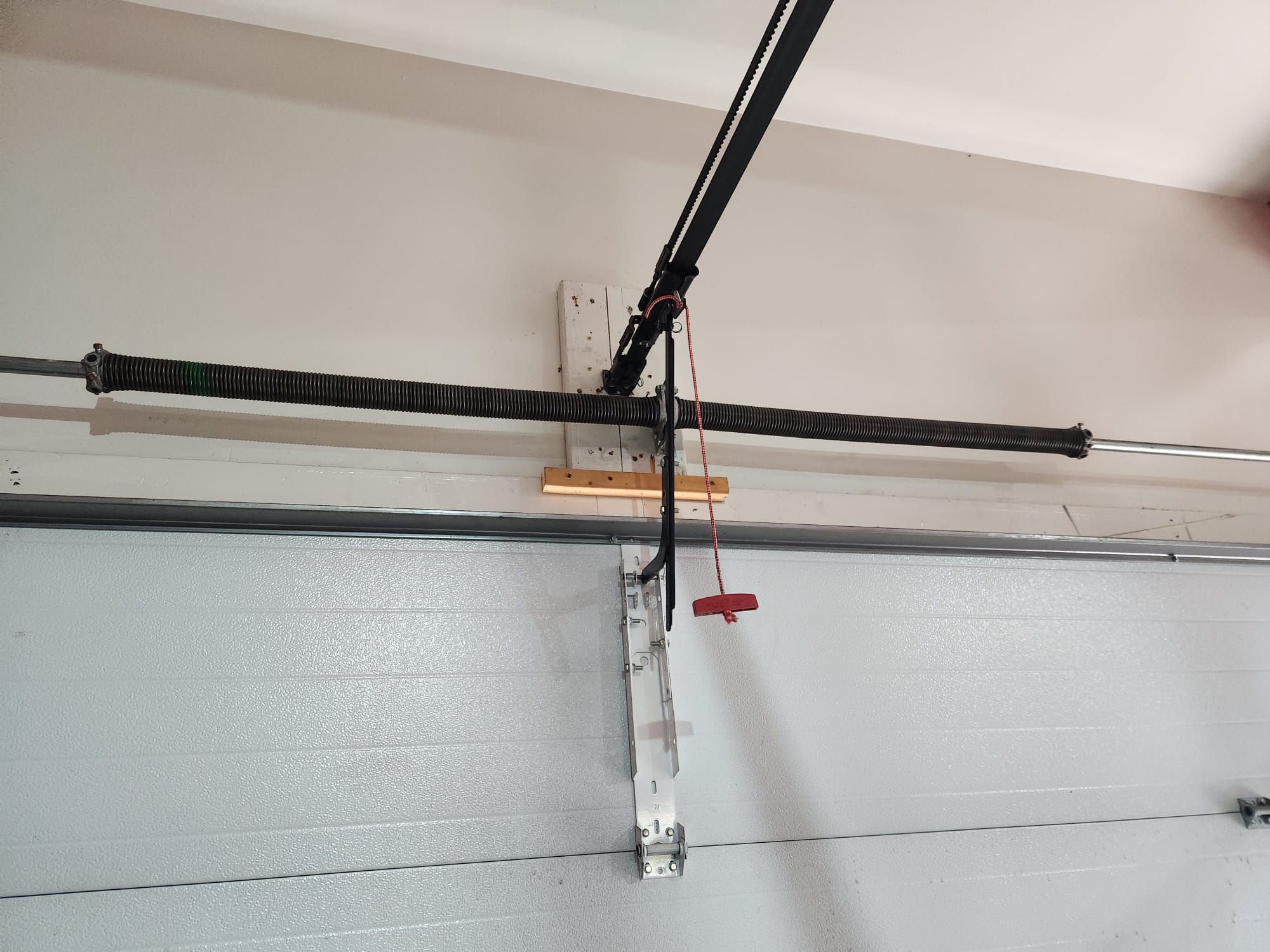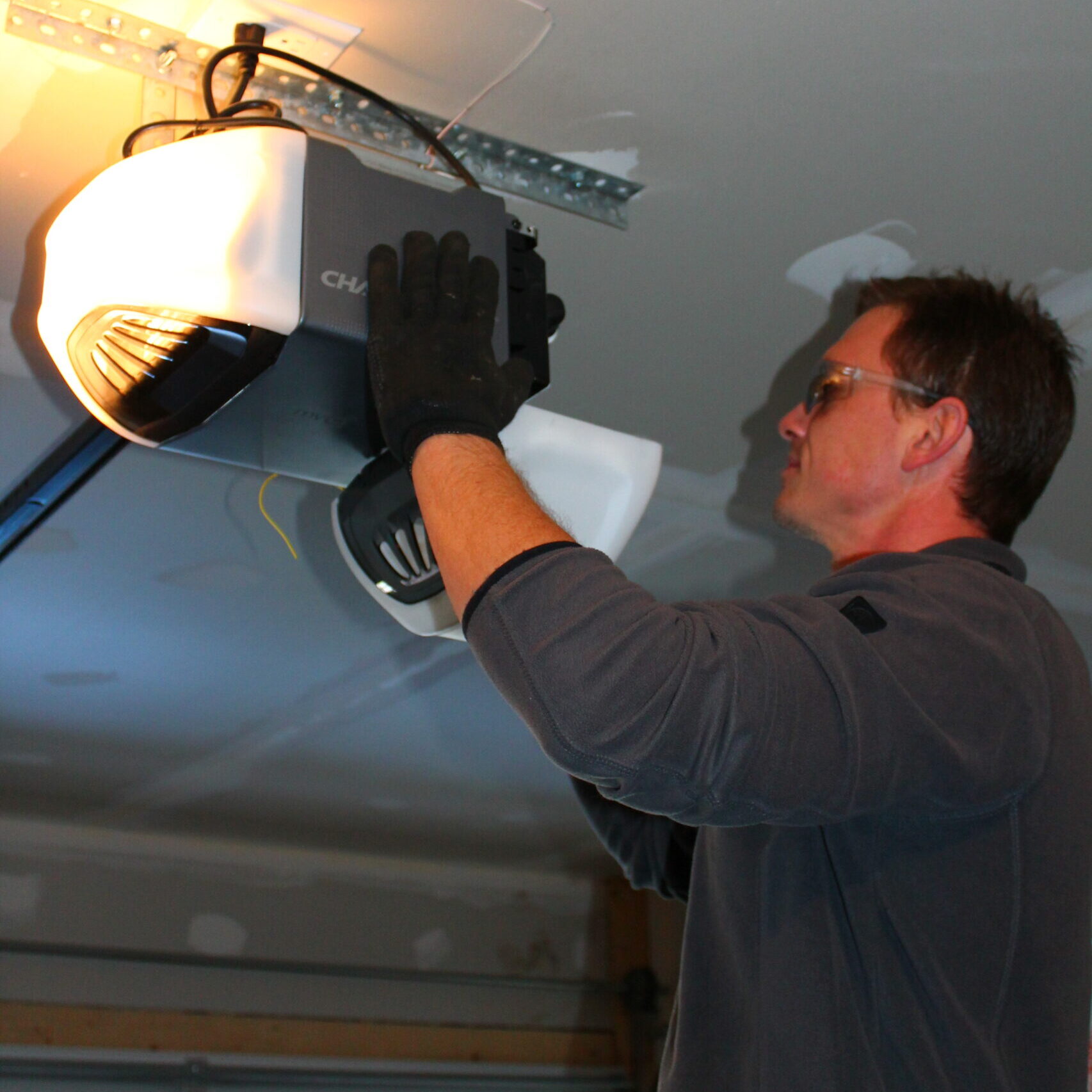Garage Door Spring Repair
All Services
Get In Touch

Garage Door Spring Repair
Let’s see what the balancing system needs to do. The sectional garage door leaf weighs an average of 100 – 300 lb; at large industrial garage doors, their weight can reach 700 lb and even more. It’s heavy, is it not? And then the balancing mechanism comes to the aid. There are two kinds: the good old tension springs and their younger brothers, torsion springs. Let’s consider them in detail.
Tension Springs, as their name suggests, work on tensile force. They work in pairs, always vertically or horizontally on the right and left of the opening. When the garage door sections move downwards, the springs are stretched (accumulating energy); moving the cloth upwards, they are compressed (releasing energy). Springs are always two, more precisely four, but more on that later. They work independently of each other, driven by their rope.
Torsion springs – work on twisting- are located on the shaft, which rotates the drive cable, under the garage door’s weight. It accumulates energy when it falls down (thanks to the force of attraction and old man Newton), while not letting the garage door fall, and gives this energy when the garage door needs to be lifted. The shaft with torsion springs is always horizontal, above the garage door’s opening, or in the depth of the room, in case of a low ceiling or a hat room.
Torsion springs not only look impressive, but are also able to work with any weight of the garage doors. The fact is that they are selected individually, based on the size of the garage door, the weight of the garage door, and the intensity of use. In the case of hefty doors, a two-shaft balancing system is used. A tensioner chain is used to transfer torque between shafts.
Book a Technician
Contact Us to Book a Technician
Get an Estimate
Get a fixed and fair price estimate for your job
Simple Pricing
No hidden charges from our customers!

Complete Services for Garage Door
What Are Tension Springs?
Tension or extension springs are mounted on either side of the garage door and stretch along the horizontal tracks. They extend and contract to counterbalance the door’s weight, making it easier to open and close.
Advantages of Tension Springs
1. Ease of Installation
One of the standout features of tension springs is their straightforward installation process. Unlike torsion springs that require mounting above the door, tension springs align with the horizontal tracks, making them less complex to install, especially in garages with limited headroom.
2. Cost-Effective
Tension springs are generally more affordable than their torsion counterparts. This makes them an attractive option for homeowners looking for a budget-friendly solution without compromising functionality.
3. Suitable for Various Door Types
These springs are versatile and can be used on various garage door styles, particularly lighter ones. Their adaptability makes them a go-to choice for many residential applications.
Tension springs in terms of requirements for installation and use favorably differ. It is easy to install, to the curvature of the wall opening they as they are less sensitive, but they work noisily.
